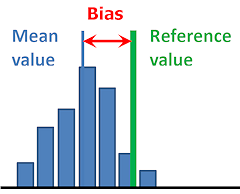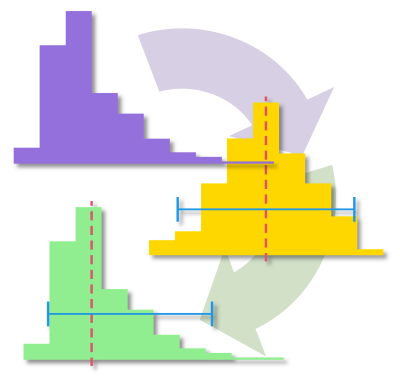Using repeated measurements to improve the standard uncertainty
- Details
- Last Updated: Friday, 30 May 2025 22:50
Content
Analysts often take multiple observations, and sometimes average the result of several observations to reduce the uncertainty associated with random variation. However, it is often unclear how the standard uncertainty associated with averaged results should be calculated from an observed standard deviation. Sometimes one should divide by the square root of the number of observations; sometimes the standard deviation is used unchanged, and sometimes some alternative formula is appropriate.
This information leaflet has been prepared by the Eurachem Measurement Uncertainty and Tracability Working Group (see here for details) to give further explanation of when the classical 'root n' formula can, and can not, be used. The leaflet amplifies principles described in the Eurachem Guide "Quantifying uncertainty in analytical measurement", which is available here.
Availability
- View the leaflet in Bulgarian (pdf, 134 kB) (new window)
- View the leaflet in Czech (pdf, 184 kB) (new window)
- View the leaflet in English (pdf, 111 kB) (new window)
- View the leaflet in Estonian (pdf, 158 kB) (new window)
- View the leaflet in German (pdf, 126 kB) (new window)
- View the leaflet in Greek (pdf, 146 kB) (new window)
- View the leaflet in Spanish* (pdf, 260 kB) (new window)
- View the leaflet in Turkish (pdf, 150 kB) (new window)
- View the leaflet in Ukrainian* (pdf, 180 kB) (new window)
*2015 edition
Translation
Translation into other languages is encouraged for members of Eurachem. Other offers of translation should be directed to the Eurachem Secretariat for permission. The Eurachem policy on maintenance and development of Eurachem guidance, available on the Policies page, gives further information on translation.
Amendment history
This leaflet was amended to improve clarity in April 2016. The previous English version, as issued in 2015, is available for comparison.




 Bias is routinely determined during the validation of analytical methods. Usually, the observed bias is not exactly zero. It is then important to decide whether the observed bias can reasonably be treated as unimportant, or whether some further action needs to be taken. This can be particularly difficult to decide when applying the principles of the 'Guide to the Expression of Uncertainty in measurement', which assumes that a correction has been applied for any important bias.
Bias is routinely determined during the validation of analytical methods. Usually, the observed bias is not exactly zero. It is then important to decide whether the observed bias can reasonably be treated as unimportant, or whether some further action needs to be taken. This can be particularly difficult to decide when applying the principles of the 'Guide to the Expression of Uncertainty in measurement', which assumes that a correction has been applied for any important bias. 
 Measurement results are only fit for purpose if the reported uncertainty is correct and has a magnitude small enough for the intended use. The target measurement uncertainty (target MU) is the maximum admissible uncertainty defined for a specific measurement goal. This information leaflet provides a short and accessible introduction to the idea of target measurement uncertainty.
Measurement results are only fit for purpose if the reported uncertainty is correct and has a magnitude small enough for the intended use. The target measurement uncertainty (target MU) is the maximum admissible uncertainty defined for a specific measurement goal. This information leaflet provides a short and accessible introduction to the idea of target measurement uncertainty.
 Validation of analytical methods (i.e. procedures) usually excludes the primary sampling, but this is now widely recognised as the first step in the measurement procedure. Validation of the whole measurement procedure therefore requires consideration of a performance characteristic that reflects the quality of all of the steps (including sampling and physical sample preparation). The uncertainty of the final measurement value is that key characteristic that unifies this whole measurement procedure and enables its validation, particularly when supported by performance characteristics that have an established role in the validation of an analytical procedure as a standalone activity.
Validation of analytical methods (i.e. procedures) usually excludes the primary sampling, but this is now widely recognised as the first step in the measurement procedure. Validation of the whole measurement procedure therefore requires consideration of a performance characteristic that reflects the quality of all of the steps (including sampling and physical sample preparation). The uncertainty of the final measurement value is that key characteristic that unifies this whole measurement procedure and enables its validation, particularly when supported by performance characteristics that have an established role in the validation of an analytical procedure as a standalone activity.